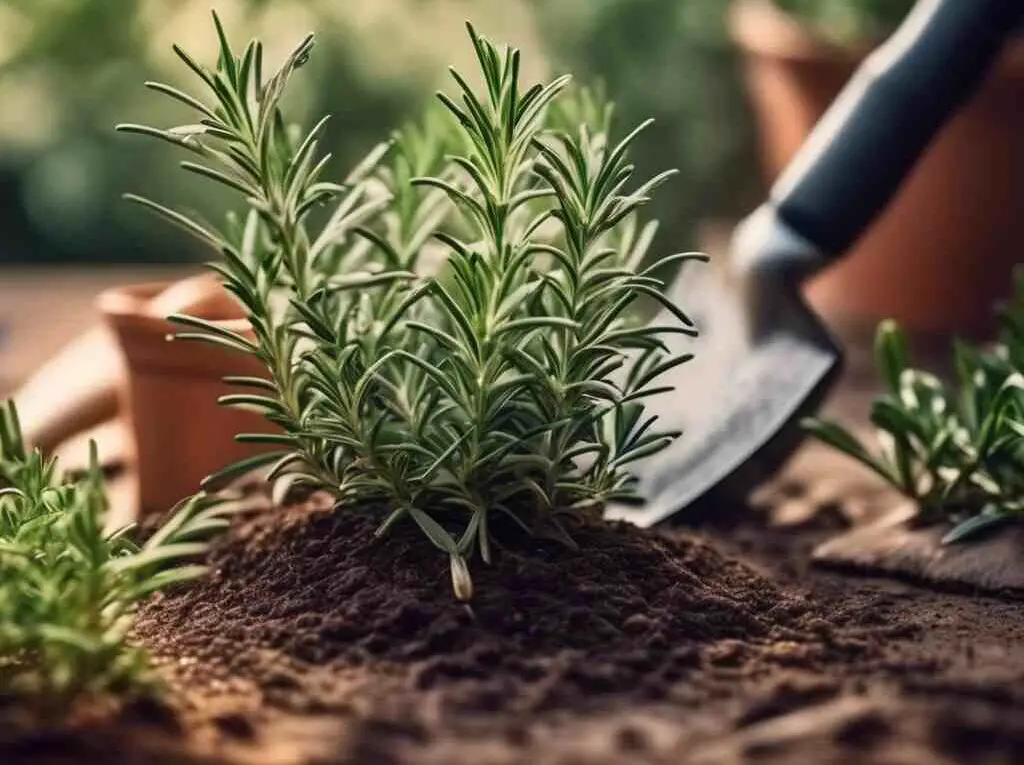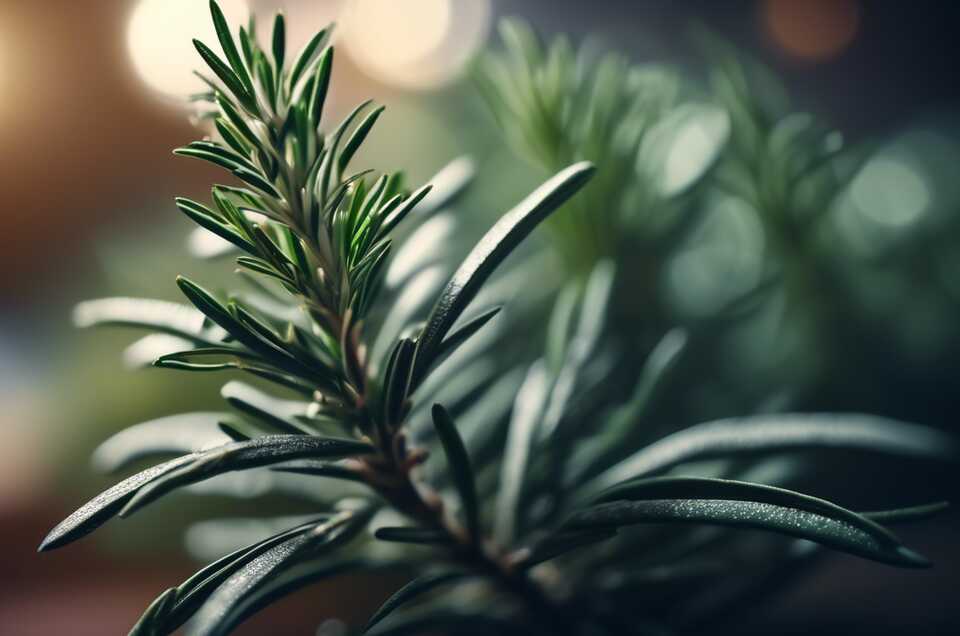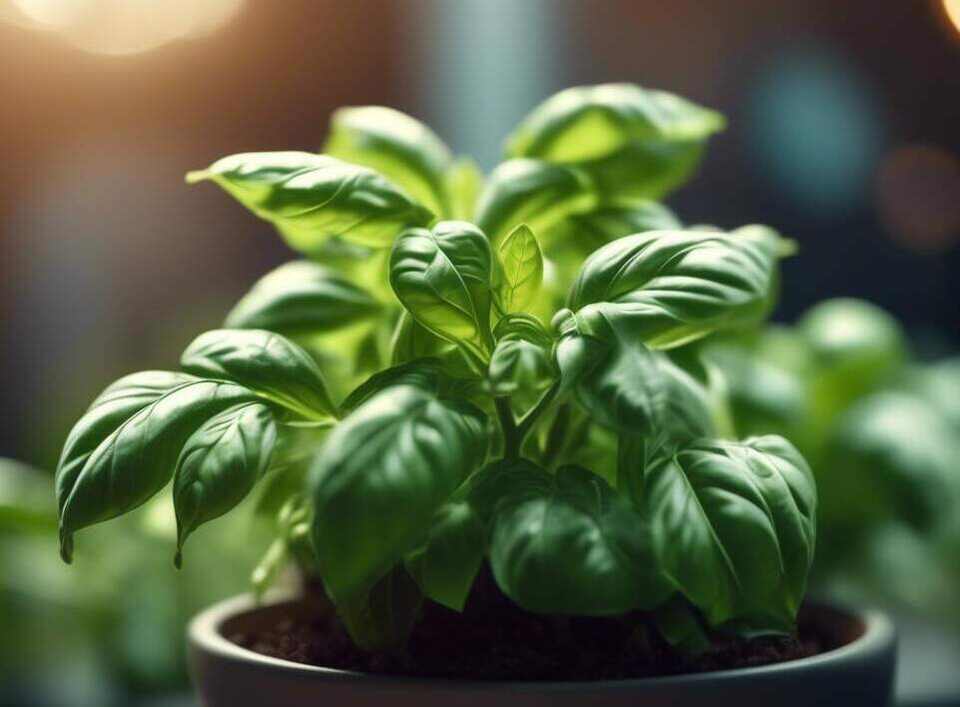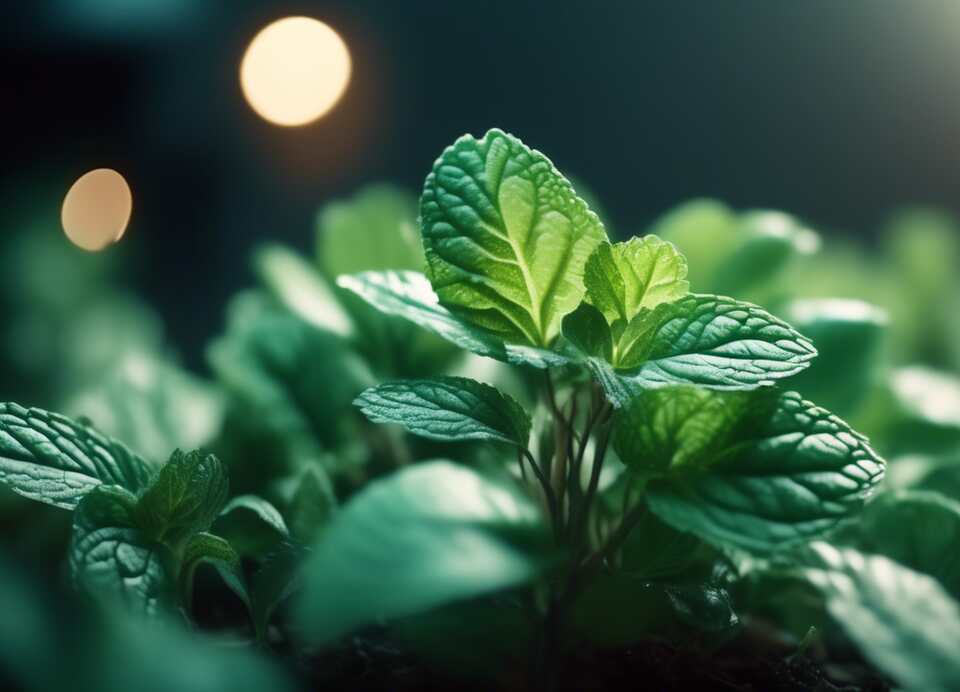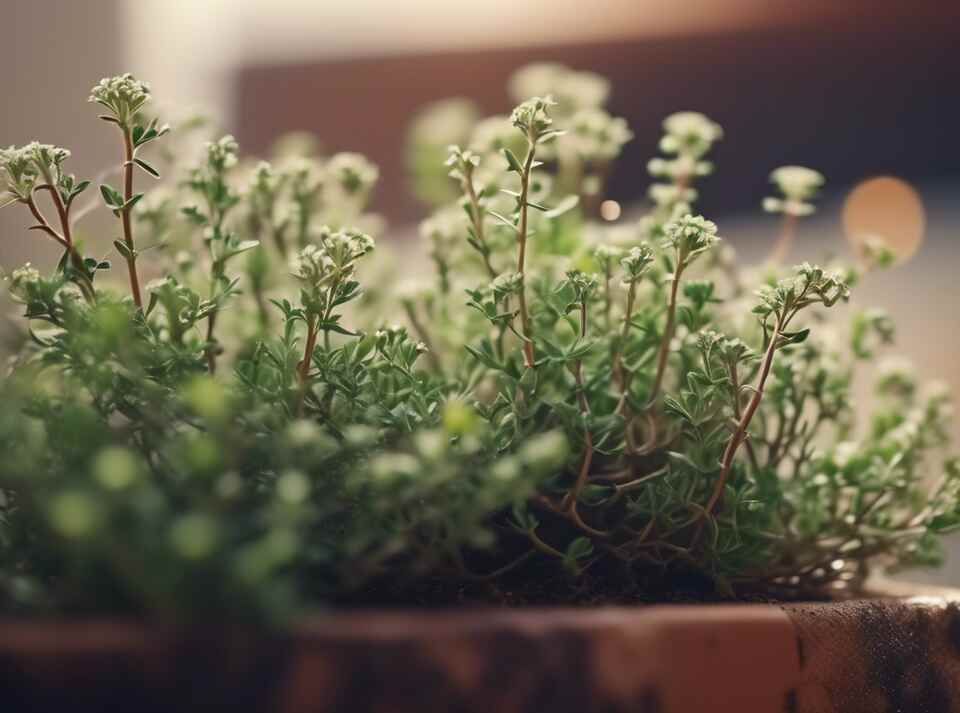The Ultimate Guide to Herb Gardening: From Seed to Harvest!
Are you looking to add a dash of freshness to your cooking and a touch of green to your living space? Welcome to the wonderful world of herb gardening! Whether you’re a culinary enthusiast, a health-conscious individual, or simply someone who loves the idea of growing your own food, herb gardening is an excellent way to get started. This comprehensive guide will walk you through everything you need to know about herb gardening, from selecting the right herbs to harvesting and using them in your daily life.
Table of Contents
- 1 Why Start an Herb Garden?
- 2 Choosing Your Herbs
- 3 Setting Up Your Herb Garden
- 4 Planting Your Herbs
- 5 Caring for Your Herb Garden
- 6 Harvesting and Using Your Herbs
- 7 Seasonal Care for Your Herb Garden
- 8 Companion Planting with Herbs
- 9 Common Herb Gardening Mistakes to Avoid
- 10 Advanced Herb Gardening Techniques
- 11 The Health Benefits of Common Herbs
- 12 Creating an Herb Garden for Pollinators
- 13 Culinary Herb Combinations
- 14 Medicinal Herb Gardening
- 15 Herb Gardening in Small Spaces
- 16 Troubleshooting Common Herb Garden Problems
- 17 Herbs for Specific Uses
- 18 Sustainable Herb Gardening Practices
- 19 The Future of Herb Gardening
- 20 Conclusion: The Joy of Herb Gardening
- 21 Author
Why Start an Herb Garden?
Before we dive into the nitty-gritty of herb gardening, let’s explore why it’s such a rewarding hobby:
- Fresh Flavors at Your Fingertips: Nothing beats the taste of fresh herbs in your cooking. Having an herb garden means you’ll always have access to vibrant, flavorful herbs.
- Cost-Effective: Buying fresh herbs from the store can be expensive. Growing your own is much more economical in the long run.
- Health Benefits: Many herbs are packed with vitamins, minerals, and antioxidants. They can boost your health while enhancing your meals.
- Aromatherapy: Herbs like lavender, mint, and rosemary not only taste great but also fill your space with delightful fragrances.
- Low Maintenance: Compared to other types of gardening, herb gardens are relatively easy to maintain, making them perfect for beginners.
- Versatility: Herbs can be grown indoors or outdoors, in small pots or large gardens, making them suitable for any living situation.
Now that we’ve covered the ‘why’, let’s move on to the ‘how’ of herb gardening.
Choosing Your Herbs
The first step in creating your herb garden is deciding which herbs to grow. Here’s a list of popular herbs that are easy to grow and widely used in cooking:
| Herb | Flavor Profile | Growing Difficulty | Light Requirements | Water Requirements |
|---|---|---|---|---|
| Basil | Sweet, peppery | Easy | Full sun | Moderate |
| Mint | Cool, refreshing | Very easy | Partial shade to full sun | High |
| Rosemary | Woody, piney | Moderate | Full sun | Low |
| Thyme | Earthy, slightly minty | Easy | Full sun | Low |
| Parsley | Fresh, mild | Easy | Partial shade to full sun | Moderate |
| Cilantro | Citrusy, pungent | Easy | Partial shade | Moderate |
| Chives | Mild onion flavor | Easy | Full sun | Moderate |
| Oregano | Earthy, slightly bitter | Easy | Full sun | Low |
| Sage | Earthy, slightly peppery | Moderate | Full sun | Low |
| Dill | Tangy, pickle-like | Easy | Full sun | Moderate |
When choosing your herbs, consider your cooking preferences, the amount of space you have, and the growing conditions you can provide. It’s often best to start with 3-5 herbs and expand your garden as you gain experience.
Setting Up Your Herb Garden
Now that you’ve chosen your herbs, it’s time to set up your garden. You have several options depending on your living situation and preferences:
Indoor Herb Gardens
If you’re short on outdoor space or live in an area with harsh winters, an indoor herb garden might be your best bet. Here’s what you need to know:
- Location: Choose a spot that gets at least 6 hours of sunlight per day, typically a south-facing window. If natural light is limited, consider using grow lights.
- Containers: Use pots with drainage holes to prevent waterlogging. The size of the pot will depend on the herb – most herbs do well in 6-8 inch pots.
- Soil: Use a well-draining potting mix specifically designed for containers. Avoid using garden soil, which can become compacted in pots.
- Watering: Indoor herbs generally need less water than outdoor plants. Water when the top inch of soil feels dry.
- Temperature: Most herbs prefer temperatures between 65-75°F (18-24°C). Avoid placing them near drafty windows or heat sources.
Outdoor Herb Gardens
If you have outdoor space, you can create an herb garden in your yard or on a balcony or patio. Here’s what to consider:
- Location: Most herbs prefer full sun (6+ hours of direct sunlight per day). However, some herbs like mint and parsley can tolerate partial shade.
- Soil Preparation: If planting in the ground, prepare the soil by removing weeds and incorporating compost or well-rotted manure. Ensure good drainage by adding sand or perlite if your soil is heavy clay.
- Raised Beds: Consider using raised beds for better drainage and easier access. They also warm up faster in the spring, allowing for earlier planting.
- Containers: For balcony or patio gardens, use large containers with good drainage. Terra cotta pots are excellent for herbs as they allow the soil to breathe.
- Spacing: Give each herb enough space to grow. As a general rule, allow 12-18 inches between plants, depending on the herb’s mature size.
Planting Your Herbs
Whether you’re starting from seeds or seedlings, proper planting is crucial for the success of your herb garden. Here’s a step-by-step guide:
Starting from Seeds
- Timing: Start seeds indoors 6-8 weeks before the last expected frost date in your area.
- Containers: Use seed trays or small pots filled with seed starting mix.
- Planting: Sow seeds according to package instructions. Most herb seeds should be planted about 1/4 inch deep.
- Watering: Keep the soil consistently moist but not waterlogged. Consider covering the containers with plastic wrap to maintain humidity until seeds germinate.
- Light: Once seeds germinate, provide plenty of light. Seedlings need 14-16 hours of light per day.
- Hardening Off: Before transplanting outdoors, gradually expose seedlings to outdoor conditions over 7-10 days.
Planting Seedlings
- Prepare the Soil: Loosen the soil and mix in some compost.
- Dig a Hole: Make it slightly larger than the root ball of your seedling.
- Remove the Seedling: Gently remove the seedling from its container, being careful not to damage the roots.
- Plant: Place the seedling in the hole, ensuring it’s at the same depth it was in its original container.
- Backfill: Fill in around the plant with soil, gently firming it down.
- Water: Water thoroughly after planting to help settle the soil around the roots.
Caring for Your Herb Garden
Now that your herbs are planted, it’s time to care for them. Here are the key aspects of herb garden maintenance:
Watering
Proper watering is crucial for herb health. Here are some guidelines:
- Water deeply but infrequently to encourage deep root growth.
- Most herbs prefer soil that’s allowed to dry slightly between waterings.
- Water at the base of the plant to avoid wetting the leaves, which can lead to fungal diseases.
- Water in the morning to allow foliage to dry before evening.
Fertilizing
Herbs generally don’t need much fertilizer. In fact, over-fertilizing can lead to less flavorful herbs. Here’s what to keep in mind:
- Use a balanced, water-soluble fertilizer at half strength once a month during the growing season.
- Alternatively, add a slow-release organic fertilizer to the soil at planting time.
- If your herbs are growing in containers, they may need more frequent fertilization as nutrients leach out with watering.
Pruning and Harvesting
Regular pruning and harvesting encourage bushy growth and prevent herbs from flowering too quickly. Here’s how to do it:
- Start harvesting when the plant has enough foliage to maintain growth.
- Cut stems close to a leaf intersection.
- Never remove more than 1/3 of the plant at one time.
- Pinch off any flower buds to prolong leaf production, unless you’re growing the herb for its flowers (like lavender).
Pest and Disease Management
While herbs are generally resistant to pests and diseases, they can still face some challenges. Here are some common issues and how to address them:
- Aphids: These small, soft-bodied insects can cluster on new growth. Control them by spraying with water or insecticidal soap.
- Spider Mites: These tiny pests can cause stippling on leaves. Increase humidity and spray with water or neem oil.
- Powdery Mildew: This fungal disease appears as a white powder on leaves. Improve air circulation and avoid overhead watering.
- Root Rot: Caused by overwatering, this can kill plants. Ensure good drainage and don’t overwater.
Remember, the best defense against pests and diseases is prevention. Keep your plants healthy with proper care, and they’ll be better able to resist problems.
Harvesting and Using Your Herbs
The moment you’ve been waiting for – harvesting your herbs! Here’s how to get the most out of your herb garden:
When to Harvest
- Most herbs can be harvested once they’ve reached 6-8 inches in height.
- Harvest in the morning after the dew has dried but before the heat of the day.
- Harvest herbs regularly to encourage continued growth.
How to Harvest
- Use clean, sharp scissors or pruning shears to avoid damaging the plant.
- Cut stems close to a leaf intersection.
- For leafy herbs like basil and mint, pinch off the top two sets of leaves.
- For woody herbs like rosemary and thyme, cut off the top 2-3 inches of growth.
Using Fresh Herbs
Fresh herbs are a culinary delight. Here are some ways to use them:
- Garnishes: Sprinkle chopped herbs over dishes just before serving.
- Salads: Add whole herb leaves to green salads for extra flavor.
- Pestos: Blend herbs with olive oil, nuts, and cheese for delicious pestos.
- Herb Butters: Mix chopped herbs into softened butter for a flavorful spread.
- Infusions: Add herbs to oils, vinegars, or even water for flavored drinks.
Preserving Herbs
To enjoy your herbs year-round, try these preservation methods:
- Drying: Hang bunches of herbs upside down in a warm, dry place until crisp.
- Freezing: Chop herbs and freeze in ice cube trays with a bit of water or oil.
- Herb Salt: Mix chopped herbs with coarse salt for a flavorful seasoning.
- Herbal Vinegars: Infuse herbs in vinegar for several weeks, then strain.
Seasonal Care for Your Herb Garden
As the seasons change, so do the needs of your herb garden. Here’s a seasonal guide to herb care:
Spring
- Start seeds indoors or direct sow in the garden after the last frost.
- Prune any overwintered herbs to encourage new growth.
- Fertilize perennial herbs as new growth begins.
Summer
- Water deeply and regularly, especially during dry spells.
- Harvest herbs frequently to prevent flowering and encourage bushiness.
- Mulch around plants to retain moisture and suppress weeds.
Fall
- Reduce watering and stop fertilizing as growth slows.
- Bring tender perennial herbs indoors before the first frost.
- Harvest and preserve herbs for winter use.
Winter
- Protect outdoor perennial herbs with a layer of mulch.
- Water indoor herbs sparingly, allowing soil to dry between waterings.
- Provide supplemental light for indoor herbs if natural light is limited.
Companion Planting with Herbs
Companion planting is the practice of growing different plants together for mutual benefit. Herbs are excellent companions for many vegetables and flowers. Here are some beneficial herb pairings:
- Basil: Plant near tomatoes to improve flavor and repel pests.
- Rosemary: Grow near cabbage, beans, and carrots to deter pests.
- Mint: Plant near cabbage and tomatoes, but keep it contained as it spreads aggressively.
- Dill: Companion plant with cucumbers for improved flavor.
- Cilantro: Grow near spinach to deter pests.
Remember to consider the growing needs of each plant when companion planting. Ensure all plants in a grouping have similar light, water, and soil requirements.
Common Herb Gardening Mistakes to Avoid
Even experienced gardeners can make mistakes. Here are some common pitfalls to watch out for:
- Overwatering: More herbs die from overwatering than underwatering. Always check the soil before watering.
- Poor Drainage: Ensure your pots or garden beds have adequate drainage to prevent root rot.
- Overcrowding: Give your herbs enough space to grow. Overcrowding can lead to poor air circulation and increased disease risk.
- Overharvesting: Never remove more than 1/3 of the plant at one time to ensure it can recover.
- Allowing Herbs to Flower: While herb flowers are beautiful, allowing herbs to flower can change their flavor and reduce leaf production.
- Using Garden Soil in Containers: Garden soil can become compacted in pots. Always use a well-draining potting mix for container herbs.
- Neglecting to Rotate Container Plants: Regularly turn your potted herbs to ensure even growth and prevent them from leaning towards the light source.
Advanced Herb Gardening Techniques
Once you’ve mastered the basics, you might want to explore some advanced techniques:
Propagation
Many herbs can be propagated from cuttings, allowing you to expand your garden for free:
- Stem Cuttings: Cut a 4-6 inch stem just below a leaf node. Remove lower leaves and place in water or moist soil.
- Root Division: For perennial herbs like mint or oregano, dig up the plant and gently separate the root ball into smaller sections.
- Layering: Pin a low-growing stem to the soil. Once it roots, cut it from the parent plant and transplant.
Hydroponics
Growing herbs hydroponically (in water without soil) can be a fun and productive way to garden, especially in small spaces:
- Deep Water Culture: Suspend herb plants in net pots over a nutrient solution.
- Nutrient Film Technique: A thin film of nutrient solution flows over the roots in a shallow channel.
- Vertical Hydroponics: Stack multiple growing levels for space-efficient gardening.
Herb Spirals
An herb spiral is a three-dimensional garden design that creates different microclimates in a small space:
- Construction: Build a spiral-shaped mound of soil, highest in the center and gradually sloping down.
- Planting: Plant sun-loving, drought-tolerant herbs at the top and shadier, moisture-loving herbs at the bottom.
- Benefits: Maximizes space, creates different growing conditions, and looks beautiful.
The Health Benefits of Common Herbs
Beyond their culinary uses, many herbs offer significant health benefits. Here’s a quick overview of some common herbs and their potential health effects:
- Basil: Rich in antioxidants, may have anti-inflammatory properties.
- Rosemary: May improve memory and concentration, rich in antioxidants.
- Mint: Can aid digestion and relieve nausea.
- Thyme: Has antimicrobial properties, may help with respiratory issues.
- Sage: May improve brain function and memory.
- Oregano: High in antioxidants, may have antibacterial properties.
- Parsley: Rich in vitamins A, C, and K, may support bone health.
- Cilantro: May help remove heavy metals from the body, supports digestive health.
Remember, while herbs can have health benefits, they should not replace professional medical advice or prescribed treatments.
Creating an Herb Garden for Pollinators
Many herbs are excellent for attracting pollinators like bees and butterflies to your garden. This not only helps these important creatures but also improves pollination for your other plants. Here are some herbs that are particularly attractive to pollinators:
- Lavender: Bees and butterflies love its fragrant purple flowers.
- Mint: Its small flowers are very attractive to bees.
- Borage: Its star-shaped blue flowers are irresistible to bees.
- Fennel: The flat-topped yellow flower clusters attract a variety of beneficial insects.
- Bee Balm: As the name suggests, it’s a favorite of bees and also attracts hummingbirds.
- Chives: The purple pom-pom flowers are bee magnets.
To create a pollinator-friendly herb garden:
- Plant a diverse range of herbs that bloom at different times to provide food throughout the growing season.
- Avoid using pesticides, which can harm beneficial insects.
- Provide a shallow water source for insects to drink from.
- Include some native herb species, which local pollinators are adapted to.
Culinary Herb Combinations
One of the joys of having an herb garden is experimenting with different flavor combinations in your cooking. Here are some classic herb pairings to inspire your culinary adventures:
- Italian Blend: Basil, oregano, rosemary, and thyme
- Provence Herbs: Thyme, basil, fennel, sage, and lavender
- Mexican Mix: Cilantro, oregano, and epazote
- Greek Blend: Oregano, mint, dill, and parsley
- Bouquet Garni: Thyme, parsley, and bay leaf
- Fines Herbes: Parsley, chives, tarragon, and chervil
Remember, these are just starting points. Don’t be afraid to experiment and create your own unique herb blends!
Medicinal Herb Gardening
While it’s important to consult with a healthcare professional before using herbs medicinally, growing a medicinal herb garden can be a rewarding experience. Here are some common medicinal herbs and their traditional uses:
- Chamomile: Often used as a calming tea to aid sleep and digestion.
- Echinacea: Believed to boost the immune system.
- Peppermint: Used to soothe upset stomachs and aid digestion.
- Lemon Balm: Said to reduce stress and promote relaxation.
- Calendula: Often used topically for skin healing.
- St. John’s Wort: Traditionally used for mood support (note: can interact with many medications).
When growing medicinal herbs:
- Research each herb thoroughly to understand its growing needs and potential uses.
- Keep detailed records of what you plant and when.
- Be cautious about using medicinal herbs if you’re pregnant, nursing, or taking other medications.
- Always properly identify herbs before use, especially if wildcrafting (harvesting from the wild).
Herb Gardening in Small Spaces
Don’t let limited space stop you from enjoying fresh herbs! Here are some creative ways to grow herbs in small areas:
Vertical Herb Gardens
- Pallet Gardens: Upcycle a wooden pallet into a vertical planter.
- Pocket Planters: Hang fabric pocket planters on a sunny wall.
- Tiered Planters: Use stepped or pyramid-style planters to maximize vertical space.
Window Box Herbs
Perfect for apartment dwellers, window boxes can provide a variety of herbs right outside your kitchen window. Consider:
- Trailing Herbs: Thyme and oregano work well at the edges of window boxes.
- Compact Varieties: Look for dwarf varieties of larger herbs like basil or sage.
- Succession Planting: Replant quick-growing herbs like cilantro every few weeks for a constant supply.
Indoor Herb Gardens
- Windowsill Gardens: Most herbs will thrive on a sunny windowsill.
- Herb Wall: Create a living wall of herbs using a vertical planting system.
- Countertop Herb Garden: Use a small hydroponic system for year-round indoor herbs.
Troubleshooting Common Herb Garden Problems
Even with the best care, herb gardens can sometimes face challenges. Here’s how to address some common issues:
- Yellowing Leaves:
- Cause: Often due to overwatering or poor drainage.
- Solution: Reduce watering frequency and ensure good drainage.
- Leggy Growth:
- Cause: Insufficient light causing plants to stretch.
- Solution: Move to a sunnier location or provide supplemental lighting.
- Wilting:
- Cause: Could be underwatering or root rot from overwatering.
- Solution: Check soil moisture and adjust watering accordingly.
- Leaf Spots:
- Cause: Usually a fungal disease.
- Solution: Improve air circulation, avoid overhead watering, and remove affected leaves.
- Slow Growth:
- Cause: Poor soil nutrition or compacted soil.
- Solution: Fertilize with a balanced, organic fertilizer and loosen soil gently.
- Bitter Taste:
- Cause: Plant stressed by heat or allowed to flower.
- Solution: Provide shade during hot afternoons and pinch off flower buds.
Remember, prevention is often the best cure. Regular observation of your herbs can help you catch and address problems early.
Herbs for Specific Uses
While all herbs are versatile, some are particularly well-suited for specific uses. Here’s a guide to help you choose herbs based on your needs:
Culinary Herbs by Cuisine
- Mediterranean: Basil, oregano, rosemary, thyme
- Asian: Cilantro, Thai basil, lemongrass, mint
- Latin American: Cilantro, epazote, Mexican oregano
- French: Tarragon, chervil, parsley, thyme
Herbs for Tea
- Mint (peppermint, spearmint)
- Chamomile
- Lemon balm
- Lavender
- Rosemary
Herbs for Aromatherapy
- Lavender
- Rosemary
- Lemon balm
- Peppermint
- Sage
Herbs for Natural Cleaning
- Rosemary (antibacterial properties)
- Thyme (disinfectant properties)
- Lavender (freshening scent)
- Lemon balm (uplifting scent)
Sustainable Herb Gardening Practices
As gardeners, we have a responsibility to care for the environment. Here are some ways to make your herb garden more sustainable:
- Composting: Create your own compost from kitchen scraps and garden waste to nourish your herbs.
- Water Conservation:
- Use mulch to retain soil moisture.
- Collect rainwater for watering.
- Water deeply but less frequently to encourage deep root growth.
- Natural Pest Control:
- Encourage beneficial insects by planting flowers among your herbs.
- Use companion planting to deter pests naturally.
- Make homemade pest sprays from herbs like garlic or hot peppers.
- Seed Saving: Save seeds from your herbs to plant next season, preserving heirloom varieties.
- Upcycling: Use recycled containers as planters – old teapots, boots, or wooden crates can make charming herb gardens.
- Organic Practices: Avoid synthetic fertilizers and pesticides, opting for organic alternatives.
The Future of Herb Gardening
As we look to the future, herb gardening is evolving with new technologies and changing lifestyles:
- Smart Gardening: Apps and smart devices can help monitor soil moisture, light levels, and even remind you when to water or harvest.
- Urban Farming: Rooftop gardens and community herb plots are becoming more common in cities.
- Vertical and Indoor Systems: Advanced hydroponic and aeroponic systems are making it easier to grow herbs indoors year-round.
- Sustainability Focus: There’s a growing emphasis on native herbs and water-wise gardening practices.
- Culinary Trends: As global cuisines become more popular, there’s increasing interest in growing exotic and lesser-known herbs.
Conclusion: The Joy of Herb Gardening
Whether you’re a culinary enthusiast, a health-conscious individual, or simply someone who enjoys nurturing living things, herb gardening offers a world of benefits. From the satisfaction of growing your own food to the sensory pleasures of fragrant leaves and beautiful flowers, herbs add so much to our lives.
Remember, gardening is a journey, not a destination. Don’t be discouraged by setbacks – they’re all part of the learning process. Each season brings new opportunities to try different herbs, experiment with new techniques, and deepen your connection with nature.
So go ahead, plant those seeds, nurture those seedlings, and enjoy the fruits (or rather, herbs) of your labor. Your herb garden, whether it’s a few pots on a windowsill or a sprawling outdoor plot, is a living, growing reflection of your care and attention. Happy gardening!

